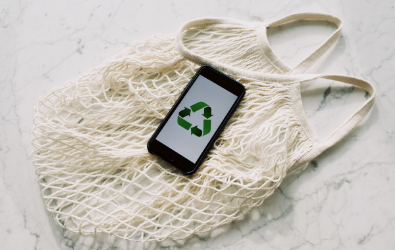Growing evidence of climate change, such as 2020’s unprecedented number of hurricanes and the extended wildfire season, as well as the COVID-19 pandemic made more people aware of their impact on the environment. With so many people working and going to school from home, cities like Los Angeles have seen the cleanest air they have experienced in years. People drove and traveled less in 2020, electric cars grew in popularity and more people focused on shopping locally, which reduced their carbon footprint. Sustainable improvements will continue to be on people’s minds in 2021. According to the National Retail Federation, 57% of consumers globally are willing to change their purchasing habits to help reduce negative environmental impact. Here are the trends to look for in 2021.
Fashion
More consumers are looking at sustainable clothing brands to reduce their environmental impact. Ponch is a sustainable brand that uses recycled water bottles to create raincoats. Other companies like Tomorrow use certified organic cotton to create sustainable clothing. However, sustainable fashion companies need to address their high prices to make eco-conscious fashion inclusive for a larger audience. There are already some brands, like Pact and Boody, that offer more affordable clothing options while still being eco-friendly.
Resale and thrifting are great ways to repurpose clothes that could otherwise have ended up in landfills. Both became easier in 2020 thanks to apps and websites, like ThredUp and Poshmark, that allow people to shop and sell from the comfort of their homes.
People are also paying greater attention to the ways in which their textiles affect human and planetary health. For example, the OEKO-TEX® STANDARD 100 label certifies that clothing has been tested for more than 350 harmful substances and the MADE IN GREEN by OEKO-TEX® label ensures the textiles were produced in a facility that implements environmentally friendly production processes, including the responsible handling of wastewater. This allows consumers to make responsible decisions to protect both the planet and their families.
Food and Beverages
More people are experiencing food insecurity than ever before. According to Project Bread, one in five households with children are dealing with hunger and food insecurity. This year, the food and beverage industries must find ways to respond to people’s concerns about how much food is thrown out at closing. In the United States, food waste is estimated to be around 30-40% of the food supply. Apps, like Food For All, make it easy for consumers to buy meals directly from restaurants at a reduced price, while reducing food waste in the process.
More food companies should look at how their packaging could be eco-friendlier by using sustainable packaging that can be composted or is made from recycled material. For example, Sweetgreen, a national restaurant chain, started using compostable bowls for their salads by partnering with Footprint, a plant-based packaging company.
Household Products
There are many sustainable household goods. Tidying up guru Marie Kondo has teamed up with The Container Store to create a sustainable line of organizational products. The line is made from recycled materials, such as bamboo, that are certified by the Forest Stewardship Council for their sustainability. Additionally, companies like Hive are committed to offering sustainable home goods to help consumers. Hive researches the products they carry on their website and ensures consumers the brands are committed to their five rules: ingredient integrity, recyclable packaging, low-carbon footprint, commitment to social good and rave-worthy.
For bigger home projects, Architectural Digest suggests upgrading used pieces by repainting or reupholstering furniture. DIY upgrades are an easy way to remain eco-friendly when re-designing your home. Additionally, home designers are beginning to avoid products that can be toxic. They are embracing safer materials, such as carpets free of harsh chemicals and flooring alternatives.
This year is an opportunity for brands and companies to react to the demand for sustainable products. As consumers, we can do our part by continuing to ask for – and then purchase – safer alternatives that are better for people and the planet.


